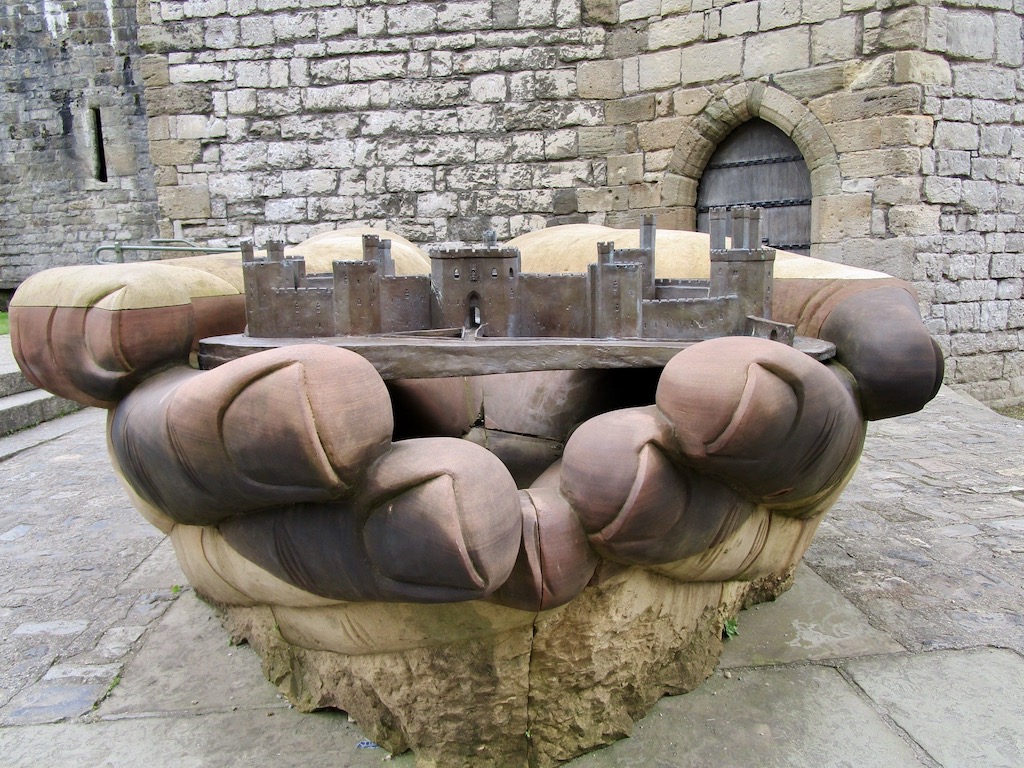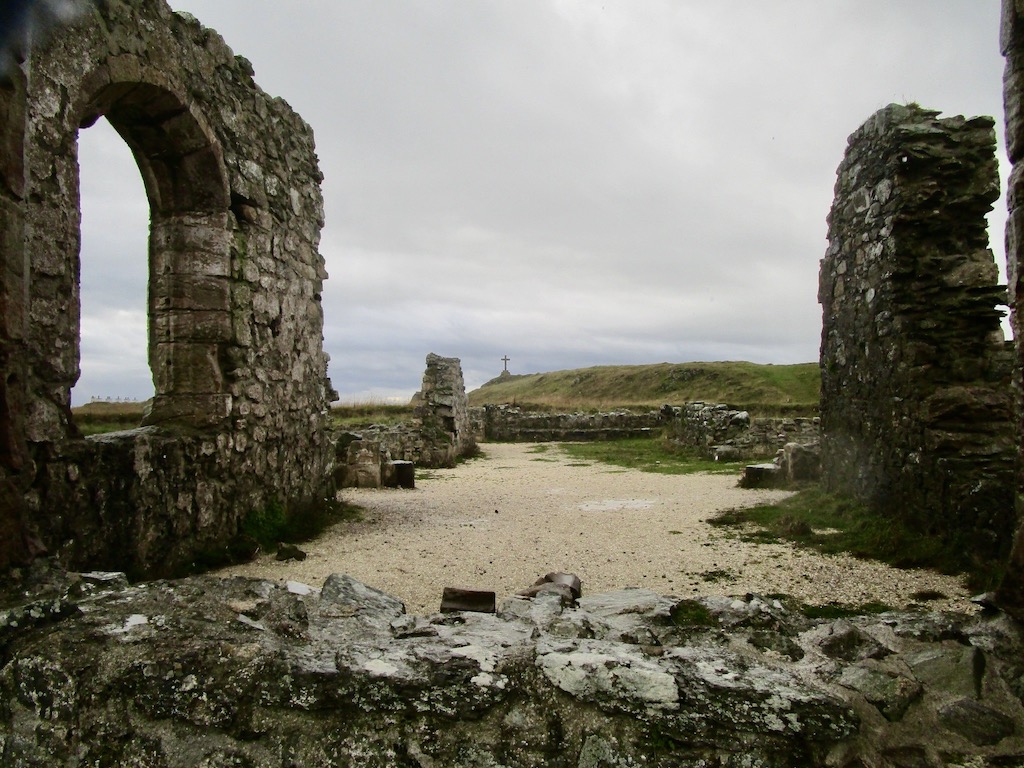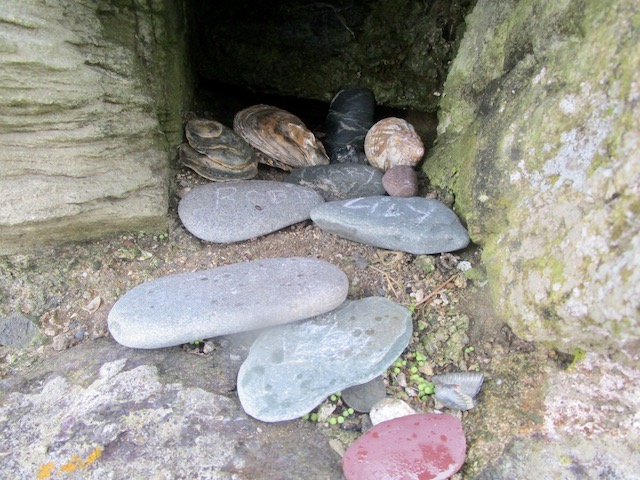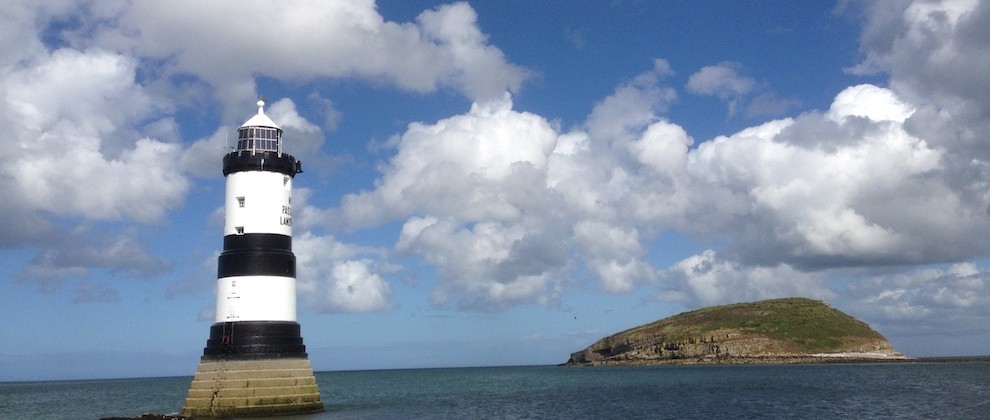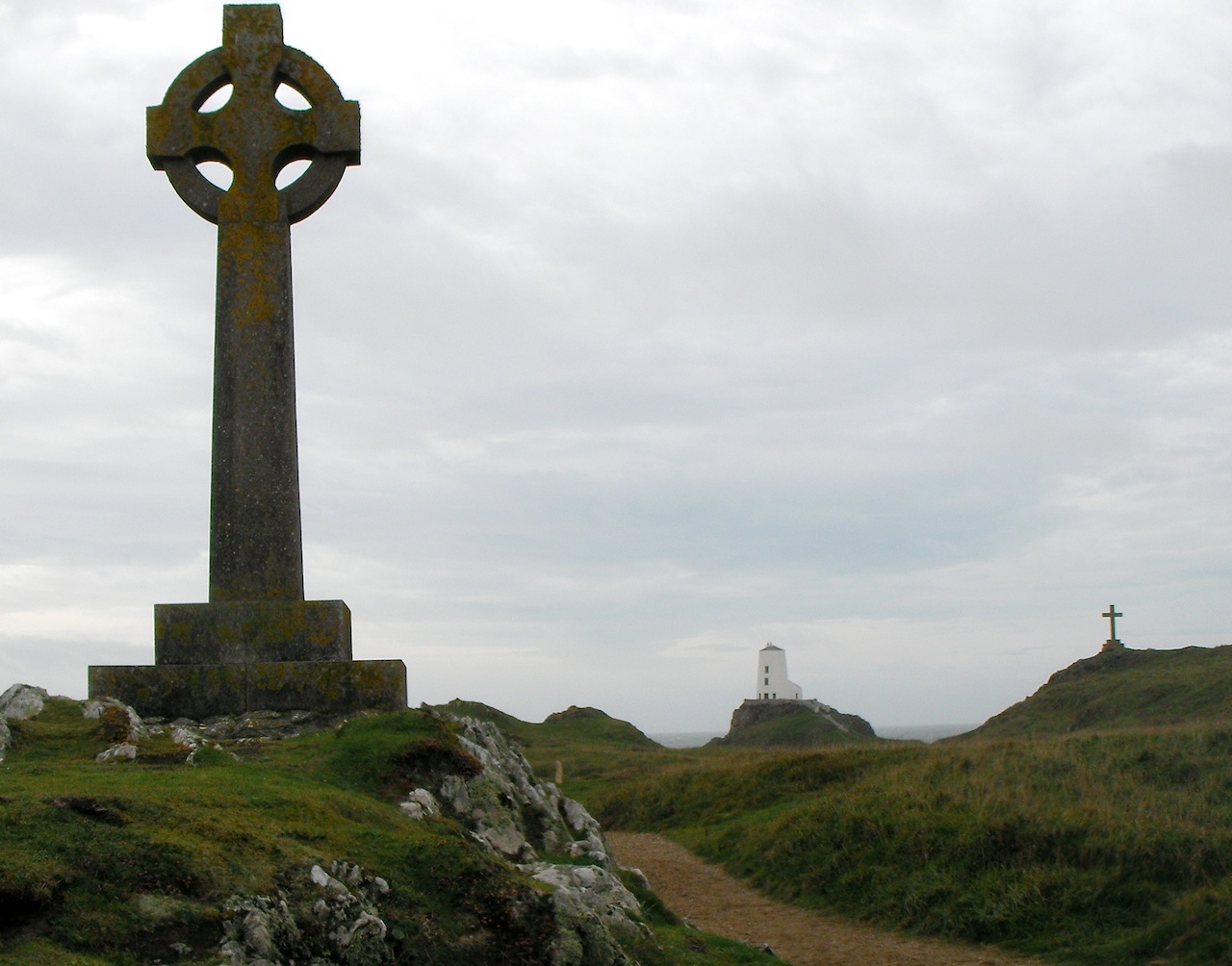
* My next assignment is a trip to West Sweden on a folklore angle. Meanwhile, here’s a tale of history and folklore from Wales.
As ever, follow me on Twitter, or subscribe to the RSS, for weekly updates from my travel-writing archive in the months to come.
“The enemy lined the shore in a dense armed mass. Among them were black-robed women with disheveled hair like furies, brandishing torches. Close by stood Druids, raising their hands to heaven and screaming dreadful curses.” – Tacitus, Annals XIV, 30
This evocative description by the Roman historian Tacitus of the final raid by the Romans on the druidic stronghold of Mona (Anglesey) in AD61 highlights the problem: the Druids, the priestly sect of ancient Celtic society, are both one of the most colorful and yet most misunderstood figures from ancient history.
They fire our imagination with tales of mystic powers and human sacrifice, but there are virtually no written records about their lifestyle, beliefs and values. Much of what we do know is recorded through this prejudice-heavy prism of Roman records.
Yet, while the Romans quashed the Druids without mercy, their influence is still strongly felt today, especially in Wales, where they bequeathed a myth-shrouded legacy of oral tradition, ancient wisdom and environmental awareness.
“What fascinates me about the druids is the way people have re-invented them over the past 500 years. With their dramatic and contrasting imagery, they’re a wonderful vehicle for our hopes, fears and prejudices in the modern age,” says Professor Ronald Hutton, historian and author about the Druids.
“The reinvented Druid taps perfectly into our desire to reconnect with the land and with our ancestors.”
Uncovering the clues
Delving beyond the fables and seeing past the Disney-styled stereotypes has tested historians for generations. But, if anywhere can offer clues to the real story of the Druids, it’s Anglesey, their ancient stronghold.
The island, jutting out of Northwest Wales towards Ireland, is home to the third most important grouping of ancient sites after Salisbury/Wilshire and Orkney. There’s no official Druid trail and a dearth of official tourist information, but its ancient Celtic heritage is increasingly inspiring visitors to the island.
If find a good guide, read up on some ancient manuscripts and devote yourself to some light detective work while driving round the rural Shangri-La, shards of clues will eventually shine through like the early rays of a solstice dawn.
The west coast of Anglesey, away from the main tourist hubs and lashed by crashing waves, is the starting point for my Druid odyssey. Bryn Celli Ddu, standing stark and alone in a sheep farmer’s field near Llanfair PG, is one Anglesey’s key Neolithic sites, dating from around 3000 BC.
The Celts found early Neolithic tribes, described as a “smaller, darker people” when they arrived in Wales around 500 BC and they adapted their sites of worship, turning Bryn Celli Ddu into a burial chamber.
It is laden with carvings evoking the cycle of birth and death, and providing a bridge to their ancestors.
Following the coast path around the sandy fringe of Rhosneiger beach, nearby Barclodaid y Gawres (built around 3010 BC) also has carvings reminiscent of other Celtic tribes from Ireland and France.
The twin, early Bronze Age standing stones of Penrhosfeiliw, stoically bracing the elements in a field heading west towards Holyhead, hint at the complexity of Neolithic geography given their inch-perfect alignment with other ancient sites all the way from Holy Island to the Lyn Peninsula.
Building a power base
By the Iron Age, the Celts were well established on Anglesey and the Druids were entering their golden age of learning, spiritual healing and community guidance. Between 100BC and 60 AD, it is believed that Anglesey became one of the leading Druid centers of learning in Western Europe.
The Druids were a class apart, some suggest they were hand picked like Dalai Lamas as children, and schooled for more than 20 years in the ancient arts.
Once ready to don the white robes, wear the gold necklace and carry the sickle to cut down the scared mistletoe, they took a vital community role, acting as astronomers, healers, political advisors and ritual leaders.
They even formed part of a powerful ancient spy network across Europe, and were revered by the Celts, a power that both alarmed and enraged Rome in equal measure.
One of their most important ritual sites is Llyn Cerrig Bach, a tranquil lake today located just across from the RAF Valley air base, where the future king of England is currently completing his training.
The lake yielded one of the most significant Iron Age finds in Western Europe when it was dredged in 1943. Swords, shields, slave chains and even war chariots returned to the surface after centuries of gentle slumbers.
For the all-powerful Druids, at one with nature and self-assured of their higher spiritual purpose in life, such largesse in offerings to their deities suggests the spy network had warned them of the impending storm as Rome grew increasingly suspicious of their revered status.
A key source of druidic power was their preference for verbal communication only. Aside from their Ogam alphabet based around the tress and the Coligny calendar with its 64 months, the Druids committed everything to memory, scoring their wisdom in musical triads and passing their knowledge via an oral tradition that today underscores much of the Welsh-language culture.
“I have a passion for the powerful mix of stories and landscape in Wales the Druids celebrated.”
“It tells me a lot about who I am as Welsh,” says Angharad Wynne, a heritage consultant working on heritage-inspired tourism trails in Wales.
This idea of linking ancient folk tales to the landscape, continuing the oral tradition of the Druids, underpins my journey around Anglesey, the lack of traditional interpretation more than compensated by tales of wizards, kings, dragons and giants for every ancient rock, or weather-beaten carving I encounter.
At the Holyhead Mountain stone circle, a group of low, stone-walled roundhouses with thatched or turf roofs, I join the Welsh-language poet Gwyn Edwards for a story-inspired yomp through purple heather and gherkin-hued gorse.
His poem, Bwrdd Arthur, filled with images of stone circles, hill forts, sacred groves and the Roman advance, was inspired by a summer-evening stroll around ancient sites on the east coast of Anglesey.
“I feel the druidic ideas are still relevant today as people need harmony and balance in their lives. They view the natural environment as a commodity,” he explains, the piercing intent of his hazel eyes betraying the softly-spoken constants of his Welsh-English patois.
“I see druidic ideas as a means to help people find peace with each other and with the world around them. In that way.”
He smiles, “They will never become old fashioned.”
Questions and answers
Driving east to Llangefni, central Anglesey, Oriel Ynys Mon is the main museum for historical interpretation about the island, but offers few clues to the legacy of the Druids.
The most significant artifact is the Hendy Head, a carved-sandstone deity with an enigmatic Mona Lisa smile and world-weary eyes. Found on a farm near Llanfair PG, it’s one of the finest examples of stone heads found on Anglesey and a rare physical manifestation of the nature-dwelling gods to which the Druids made their offerings.
The Roman targeted Anglesey from AD43 onwards, completing the final fateful massacre in AD60, and returning to Anglesey in AD73, after battles with Boudicca, to form Romano-Celt communities, the likes of which still survive today at Din Llugwy near Moelfre amongst others.
The Druids were eradicated but their knowledge, shrouded in swirling ancient mists and buried deep in the livestock-roamed pasture, would live on.
The so-called “noble savage” may be one of the most maligned figures in ancient Britain, but their legacy shapes the national psyche of Wales to this day.
“The fascination for me is the way the Druids lived a simple but balanced life as part of nature not above it,” says Angharad Wynne.
“While so much of their story remains unknown, based on speculation shaped by archaeological finds, the enigma gives us space to use our imagination.”
* This story was first published in Discover Britain Magazine in 2010. Liked this? Try Exploring prehistoric sites on the Gower Peninsula.
Post your comments below.
